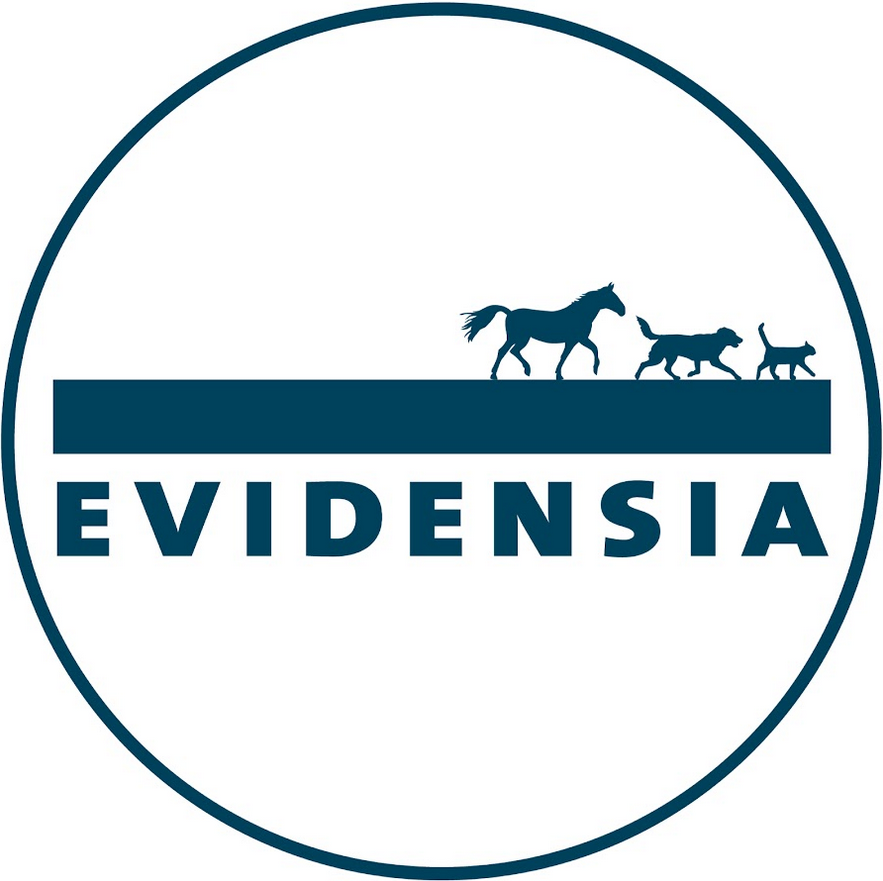Combination therapy
No results were found for your selected species
Clindabactin
Active substance
ATC code
Species
Dogs.
Indications
For the treatment of infected wounds and abscesses, and oral cavity infections including periodontal disease, caused by or associated with Staphylococcus spp., Streptococcus spp. (except Streptococcus faecalis), Bacteroides spp., Fusobacterium necrophorum, and Clostridium perfringens susceptible to clindamycin.
For the treatment of superficial pyoderma associated with Staphylococcus pseudintermedius susceptible to clindamycin.
For the treatment of osteomyelitis, caused by Staphylococcus aureus susceptible to clindamycin.
Dose to be administered and administration route
Oral use.
1. For the treatment of infected wounds and abscesses, and oral cavity infections including periodontal disease, administer either:
• 5.5 mg clindamycin/kg bodyweight every 12 hours for 7-10 days, or
• 11 mg clindamycin/kg bodyweight every 24 hours for 7-10 days If no clinical response is seen within 4 days, redetermine the diagnosis.
2. For the treatment of superficial pyoderma, administer either:
• 5.5 mg clindamycin/kg bodyweight every 12 hours, or
• 11 mg clindamycin/kg bodyweight every 24 hours
Therapy of canine superficial pyoderma is usually recommended for 21 days, with shortening or extension of therapy based on clinical judgement.
3. For the treatment of osteomyelitis, administer:
• 11 mg clindamycin/kg bodyweight every 12 hours for a minimum of 28 days If no clinical response is seen within 14 days, the treatment should be stopped and the diagnosis redetermined.
To ensure a correct dosage, bodyweight should be determined as accurately as possible to avoid under-dosing.
Tablets can be divided into 2 or 4 equal parts to ensure accurate dosing. Place the tablet on a flat surface, with its scored side facing up and the convex (rounded) side facing the surface.

2 equal parts: press down with your thumbs on both sides of the tablet.
4 equal parts: press down with your thumb in the middle of the tablet.
Adverse reactions
Dogs:
|
Uncommon (1 to 10 animals / 1,000 animals treated): |
Vomiting, diarrhoea, disorder of gastrointestinal floraa |
a Clindamycin causes overgrowth of non-sensitive organisms such as resistant clostridia and yeasts. In cases of superinfection, appropriate measures must be taken according to the clinical situation.
Reporting adverse events is important. It allows continuous safety monitoring of a veterinary medicinal product. Reports should be sent, preferably via a veterinarian, to either the marketing authorisation holder or its local representative or the national competent authority via the national reporting system. See the package leaflet for respective contact details.
Dispensing
POM-V - Prescription Only Medicine – VeterinarianEMA Categorisation
References
SUMMARY OF PRODUCT CHARACTERISTICS
1. NAME OF THE VETERINARY MEDICINAL PRODUCT
Clindabactin 440 mg chewable tablets for dogs
2. QUALITATIVE AND QUANTITATIVE COMPOSITION
1 tablet contains:
Active substance:
Clindamycin (as clindamycin hydrochloride) 440 mg Excipient(s):
For the full list of excipients, see section 6.1.
3. PHARMACEUTICAL FORM
Chewable tablet.
Light brown with brown spots, round and convex chewable flavoured 18 mm tablet with a cross-shaped break line on one side.
Tablets can be divided into 2 or 4 equal parts.
4. CLINICAL PARTICULARS
4.1 Target species
Dogs.
4.2 Indications for use, specifying the target species
For the treatment of infected wounds and abscesses, and oral cavity infections including periodontal disease, caused by or associated with Staphylococcus spp.,
Streptococcus spp. (except Streptococcus faecalis), Bacteroides spp.,
Fusobacterium necrophorum, and Clostridium perfringens susceptible to clindamycin. For the treatment of superficial pyoderma associated with Staphylococcus pseudintermedius susceptible to clindamycin.
For the treatment of osteomyelitis, caused by Staphylococcus aureus susceptible to clindamycin.
4.3 Contraindications
Do not use in cases of hypersensitivity to the active substance or to any of the excipients or to lincomycin. Do not administer to rabbits, hamsters, guinea pigs, chinchillas, horses and ruminants, because ingestion of clindamycin by these species can cause severe gastro-intestinal disturbance which may result in death.
4.4 Special warnings for each target species
None.
4.5 Special precautions for use
Special precautions for use in animals
The chewable tablets are flavoured. In order to avoid any accidental ingestion, store tablets out of reach of the animals.
Use of the product should be based on susceptibility testing of the bacteria isolated from the animal. If this is not possible, therapy should be based on local epidemiological information about susceptibility of the target bacteria.
Official, national and regional antimicrobial policies should be taken into account when the veterinary medicinal product is used.
Use of the product deviating from the instructions given in the SPC may increase the prevalence of bacteria resistant to clindamycin and may decrease the effectiveness of treatment with lincomycin or macrolide antibacterials due to the potential for crossresistance.
Cross-resistance has been demonstrated among lincosamides (including clindamycin), erythromycin and other macrolides.
In some cases (localised or mild lesions; to prevent recurrence), superficial pyoderma can be treated topically. The need for and duration of systemic antimicrobial treatment should be based on careful consideration of the individual case.
During prolonged therapy of one month or greater, periodic liver and kidney function tests and blood counts should be performed.
Animals with severe renal and/or very severe hepatic disturbances accompanied by severe metabolic aberrations should be dosed with caution and should be monitored by serum examination during high-dose clindamycin therapy.
The use of the product is not recommended in neonates.
Special precautions to be taken by the person administering the veterinary medicinal product to animals
Lincosamides (lincomycin, clindamycin, pirlimycin) may cause hypersensitivity (allergy) reactions. People with known hypersensitivity to lincosamides should avoid contact with the veterinary medicinal product.
Wash hands after handling tablets.
Accidental ingestion may result in gastro-intestinal effects such as abdominal pain and diarrhoea. Care should be taken to avoid accidental ingestion.
In order to reduce the risk of accidental ingestion by children, do not take the tablets out of the blister until ready to administer to the animal. Return part-used tablets into the blister and carton and use at the subsequent administration.
In case of accidental ingestion, particularly by children, seek medical advice immediately and show the package leaflet or the label to the physician.
4.6 Adverse reactions (frequency and seriousness)
Vomiting and diarrhoea have been observed uncommonly.
Clindamycin uncommonly causes the overgrowth of non-sensitive organisms such as resistant clostridia and yeasts. In cases of superinfection, appropriate measures must be taken according to the clinical situation.
The frequency of adverse reactions is defined using the following convention:
- very common (more than 1 in 10 animals treated displaying adverse reaction(s))
- common (more than 1 but less than 10 animals in 100 animals treated)
- uncommon (more than 1 but less than 10 animals in 1,000 animals treated)
- rare (more than 1 but less than 10 animals in 10,000 animals treated)
- very rare (less than 1 animal in 10,000 animals treated, including isolated reports)
4.7 Use during pregnancy and lactation
While high dose studies in rats suggest that clindamycin is not a teratogen and does not significantly affect the breeding performance of males and females, safety in gestating bitches or breeding male dogs has not been established.
Clindamycin crosses the placental and the blood-milk barrier.
Treatment of lactating females can cause diarrhoea in puppies.
Use only according to the benefit/risk assessment by the responsible veterinarian.
4.8 Interaction with other medicinal products and other forms of interaction
Clindamycin hydrochloride has been shown to have neuromuscular blocking properties that may enhance the action of other neuromuscular blocking agents. The product should be used with caution in animals receiving such agents.
Aluminium salts and hydroxides, kaolin and aluminium-magnesium-silicat complex may reduce the absorption of lincosamides. These digestive substances should be administered at least 2 hours before clindamycin.
Clindamycin should not be used concomitantly with or immediately after erythromycin or other macrolides to prevent macrolide-induced resistance to clindamycin. Clindamycin may reduce plasma levels of cyclosporine with a risk of lack of activity. During the simultaneous use of clindamycin and aminoglycosides (e.g.gentamicin), the risk of adverse interactions (acute renal failure) cannot be excluded.
Clindamycin should not be used concomitantly with chloramphenicol or macrolides as they antagonise each other at their site of action at the 50S ribosomal sub-unit.
4.9 Amounts to be administered and administration route
Oral use.
1. For the treatment of infected wounds and abscesses, and oral cavity infections including periodontal disease, administer either:
• 5.5 mg/kg of bodyweight every 12 hours for 7-10 days, or
• 11 mg/kg of bodyweight every 24 hours for 7-10 days
If no clinical response is seen within 4 days, redetermine the diagnosis.
2. For the treatment of superficial pyoderma, administer either:
• 5.5 mg/kg of bodyweight every 12 hours, or
• 11 mg/kg of bodyweight every 24 hours
Therapy of canine superficial pyoderma is usually recommended for 21 days, with shortening or extension of therapy based on clinical judgement.
3. For the treatment of osteomyelitis, administer:
• 11 mg/kg of bodyweight every 12 hours for a minimum of 28 days
If no clinical response is seen within 14 days, the treatment should be stopped and the diagnosis redetermined.
To ensure a correct dosage, bodyweight should be determined as accurately as possible to avoid under-dosing.
Tablets can be divided into 2 or 4 equal parts to ensure accurate dosing. Place the tablet on a flat surface, with its scored side facing up and the convex (rounded) side facing the surface.

2 equal parts: press down with your thumbs on both sides of the tablet. 4 equal parts: press down with your thumb in the middle of the tablet.
4.10 Overdose (symptoms, emergency procedures, antidotes)
Oral doses of clindamycin up to 300 mg/kg/day did not result in toxicity. Dogs receiving 600 mg/kg/day of clindamycin developed anorexia, vomiting and weight loss. In cases of overdose, discontinue treatment immediately and establish symptomatic treatment.
4.11 Withdrawal period(s) Not applicable.
5. PHARMACOLOGICAL PROPERTIES
Pharmacotherapeutic group: Anti-infectives for systemic use, lincosamides
ATC Vet Code: QJ01FF01
5.1 Pharmacodynamic properties
Mode of action
Clindamycin is a semi-synthetic antibiotic produced by 7(S)-chloro substitution of the 7(R)-hydroxy group of the natural antibiotic produced by Streptomyces lincolnensis var. lincolnensis.
Clindamycin, a mainly time-dependent acting antibiotic, acts by a bacteriostatic mechanism where the drug interferes with protein synthesis within the bacterial cell, thus inhibiting the growth and multiplication of the bacteria.
Clindamycin binds to the 23S ribosomal RNA component of the 50S subunit. This prevents amino acids binding on these ribosomes, and therefore inhibits peptide bond formation. The ribosomal sites are close to those bound by macrolides, streptogramins or chloramphenicol.
Antibacterial spectrum
Clindamycin is a moderate spectrum antimicrobial drug.
Clindamycin has in vitro activity against the following micro-organisms:
• Aerobic Gram-positive cocci, including: Staphylococcus pseudintermedius and Staphylococcus aureus (penicillinase and non-penicillinase producing strains), Streptococcus spp. (except Streptococcus faecalis).
• Anaerobic Gram-negative bacilli, including: Bacteroides spp., Fusobacterium necrophorum.
• Clostridia: Most C. perfringens are susceptible.
MIC data
CLSI clindamycin veterinary breakpoints are available for Staphylococcus spp. and Streptococci-β-haemolytic group in skin and soft tissue infections: S ≤0.5μg/ml; I=12µg/ml; R≥4μg/ml (CLSI February 2018).
Type and mechanism of resistance
Clindamycin belongs to the lincosamide group of antibiotics. Resistance can develop to the lincosamides alone, but more commonly cross-resistance occurs among macrolides, lincosamides and streptogramin B antibiotics (MLSB group). Resistance is the result of methylation of adenine residues in the 23S RNA of the 50S ribosomal subunit, which prevents drug binding to the target site. Different bacterial species are able to synthesize an enzyme, encoded by a series of structurally related erythromycin ribosomal methylase (erm) genes. In pathogenic bacteria, these determinants are mostly borne by plasmids and transposons that are selftransferable. The erm genes occur predominantly as variants erm(A) and erm(C) in Staphylococcus aureus and as variant erm(B) in Staphylococcus pseudintermedius, streptococci and enterococci . Bacteria resistant to macrolides but initially susceptible to clindamycin, rapidly develop resistance to clindamycin when exposed to macrolides. These bacteria present a risk of in vivo selection of constitutive mutants. MLSB inducible resistance is not detected by standard in vitro susceptibility testing methods. The CLSI recommends the D-zone test to be routinely performed in veterinary diagnostic laboratories in order to detect clinical isolates with inducible resistance phenotype. Clindamycin use should be discouraged in these patients. The incidence of resistance to lincosamides in Staphylococcus spp. appears to be wide-ranging in Europe. Recent studies (2010) report an incidence between 25 to 40%.
5.2 Pharmacokinetic particulars
Absorption:
Clindamycin hydrochloride is rapidly absorbed from the canine gastrointestinal tract following oral administration. After oral administration of the product to dogs (10.8 mg/kg), bioavailability was 63%.
Serum values:
After oral administration of 10.8 mg/kg bodyweight to dogs, the maximal concentration of 6.1 µg/ml (mean Cmax) is reached within 1 hour (median Tmax). The plasma elimination half-life of clindamycin in the dog is approximately 3.5 hours. No accumulation of bioactivity has been observed in dogs after several oral administrations.
Metabolism and Excretion:
Extensive research of the metabolism and excretion pattern of clindamycin shows that the parent molecule as well as bioactive and bio-inactive metabolites are excreted via the urine and faeces.
Nearly all bioactivity in the serum following oral administration is due to the parent molecule (clindamycin).
6. PHARMACEUTICAL PARTICULARS
6.1 List of excipients
Croscarmellose sodium
Starch, pregelatinized (maize)
Cellulose, microcrystalline
Silica, colloidal hydrated
Yeast (dried)
Chicken Flavour
Magnesium stearate
6.2 Major incompatibilities
Not applicable
6.3 Shelf life
Shelf life of the veterinary medicinal product as packaged for sale: 3 years Shelf life of divided tablets after first opening the immediate packaging: 3 days.
6.4 Special precautions for storage
This veterinary medicinal product does not require any special storage conditions.
6.5 Nature and composition of immediate packaging
Aluminium - Polyamide/Aluminium/PVC blister
Cardboard box of 1, 2, 3, 4, 5, 6, 7, 8, 9, 10 or 25 blisters of 10 tablets.
Cardboard box containing 10 separate cardboard boxes, each containing 1 blister of 10 tablets.
Not all pack sizes may be marketed.
6.6 Special precautions for the disposal of unused veterinary medicinal product or waste materials derived from the use of such products
Any unused veterinary medicinal product or waste materials derived from such veterinary medicinal products should be disposed of in accordance with local requirements.
7. MARKETING AUTHORISATION HOLDER
Dechra Regulatory B.V.
Handelsweg 25 5531 AE Bladel
The Netherlands
8. MARKETING AUTHORISATION NUMBER
Vm 50406/4006
9. DATE OF FIRST AUTHORISATION
16 April 2019
10. DATE OF REVISION OF THE TEXT
September 2023

Approved: 05 September 2023

| Art. Nr. | 50406/4006 |
|---|---|
| EAN | 8719874710688 |
 TRUSTED SOURCE
TRUSTED SOURCE








